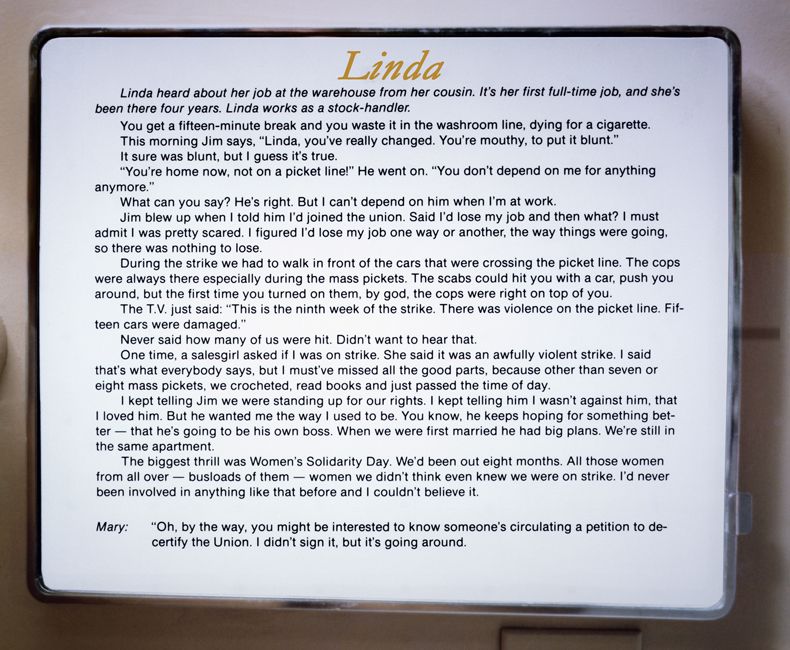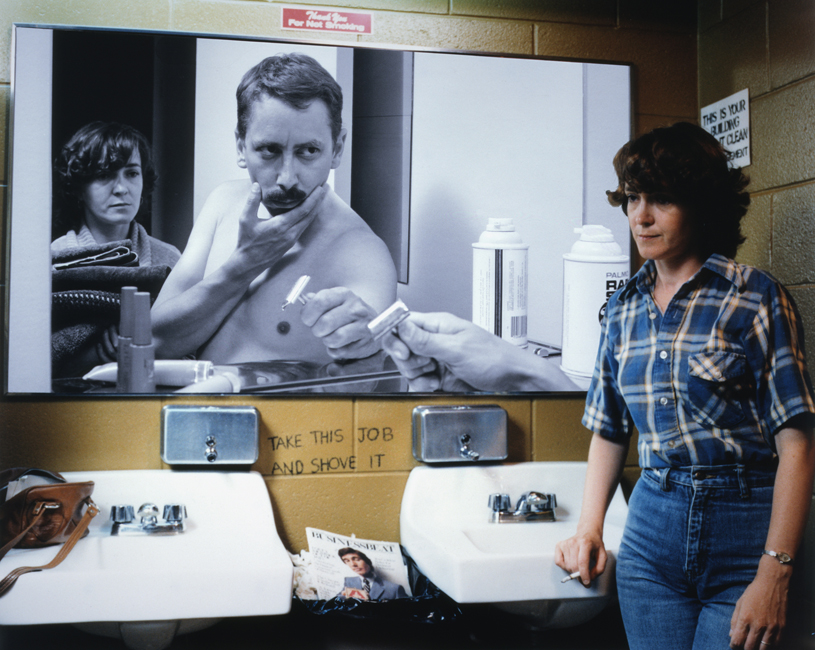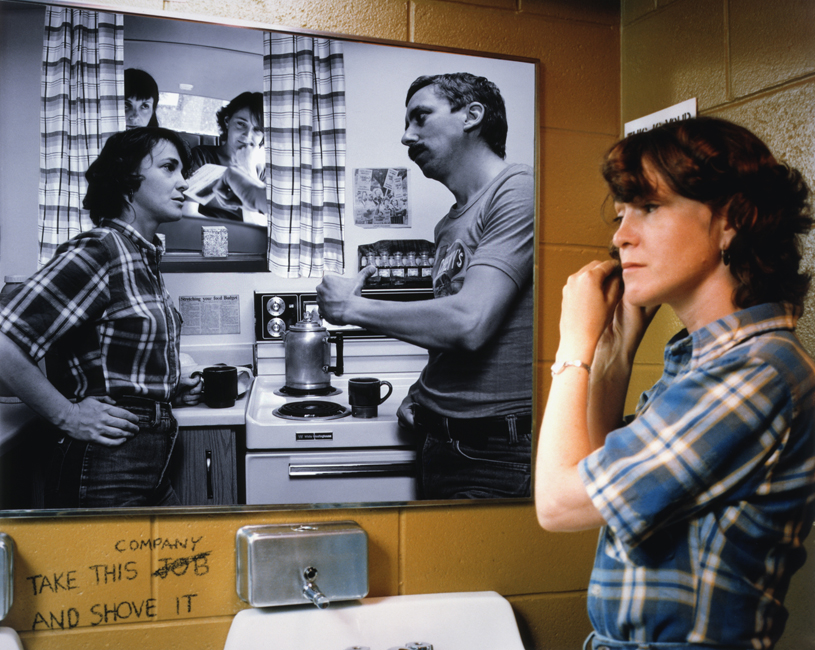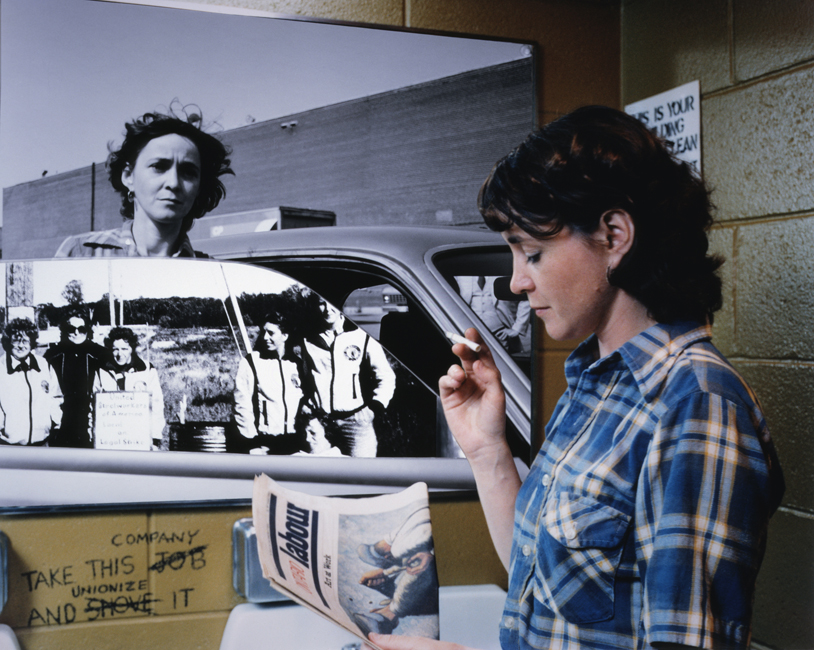Standing Up (1981) About thirty women had held the picket line at a Radio Shack warehouse in Barrie, a small town an hour north of Toronto. Many of the workers had already crossed the line and returned to work. The strike finally ended when the courts ruled that Radio Shack had bargained in bad faith and forced them to recognize the union. It was one of several strikes in Ontario lead by women. All were notorious for their anti-union activities that focused on the social bias against working women.
Condé and Beveridge started the project about six months after the women had returned to work. They met with nine of the women several times over the winter of 1980-1981 and recorded their stories as a group. The group interaction functioned as a collective memory. As the women spoke they would remind each other of different events and reactions to those events. Each experienced hearing some of the stories for the first time, as there hadn’t been much free time during the strike and it’s immediate aftermath.
The artists had originally intended to photograph the women themselves in staged scenes re-enacting their own stories. However, when they approached the women about setting up the images, there was hesitation. The women finally said that they couldn’t appear in the photographs, as there might be problems at work if they were identified. At the same time, Radio Shack was suing the union for defaming the character of the Company. This meant a total re-think. What the artists faced, of course, was one of the limits of direct documentary. In adopting a fictional format and using actors, they could now include material that would not have been possible had the women agreed to appear in the images.
The narrative centers on four composite characters each of whom combined all the stories around relations to a husband, children, management, or to each other. The text was based on the tape transcripts and storyboards were drawn up for each of the four stories and approved by the women. A final image was added at the time First Contract (the book version of Standing Up) was published in 1986, showing the actors on a staged picket line four years later (also based on real events).
The final project consists of 22 images, containing four sections of five images each plus a text panel, a title image and final postscript image. Two of the sections were photographed on location: a suburban house and a workplace washroom. Sets were constructed for the other two. The final image was staged in a parking lot. Two of the sequences had documentary images cut into windows. Two had black and white staged scenes cut into a mirror or computer monitor screen contained on the set. The documentaries were selected from several of the Ontario strikes that women had been involved in and included images taken by the Radio Shack women of their own strike.






